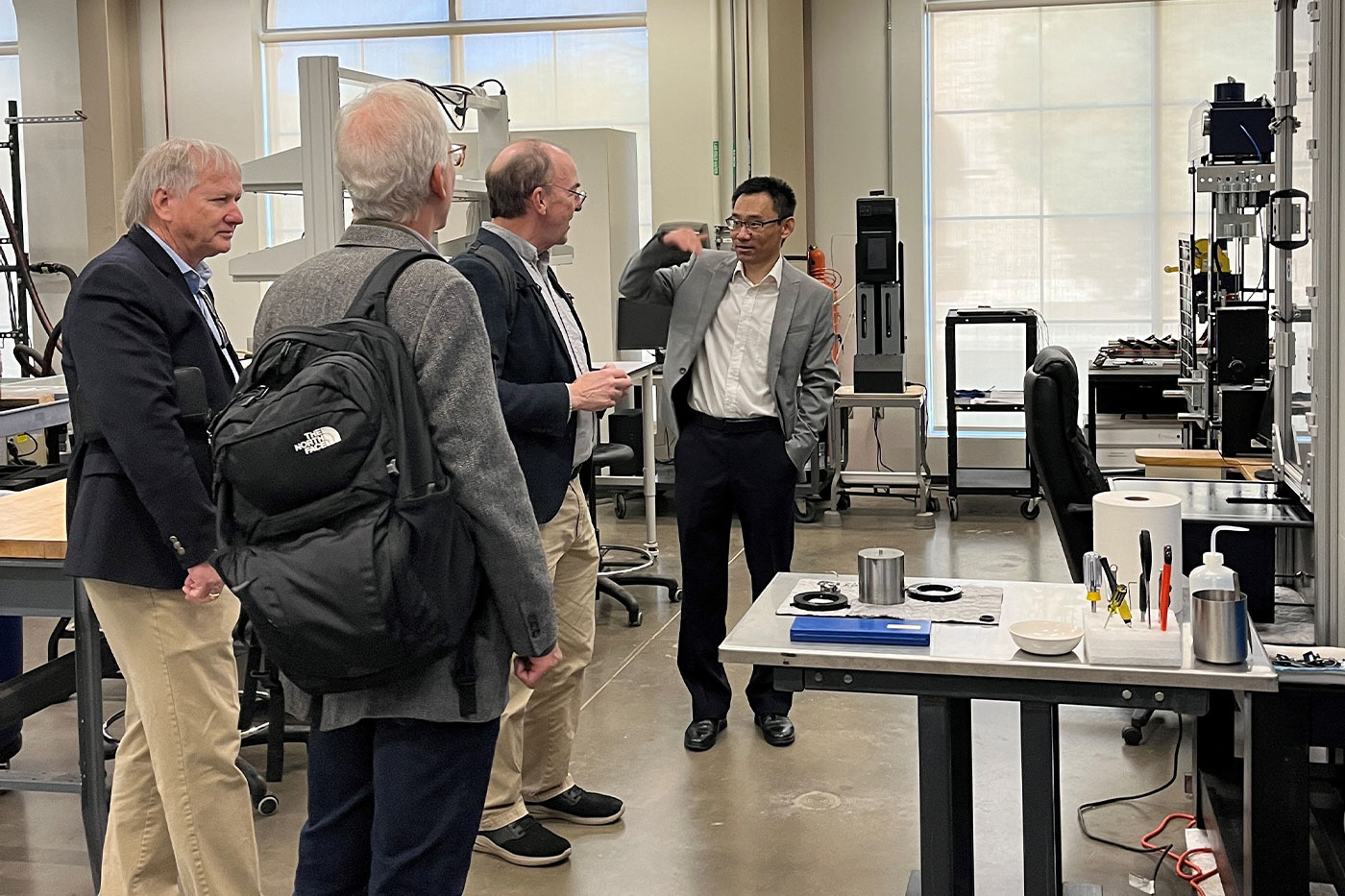Could stimulating fuels that are being produced naturally open up new energy solutions?
Already a naturally forming gas found under the Earth’s surface, hydrogen could offer an affordable, carbon-free fuel source to help guide humanity into the future. The problem is that naturally produced hydrogen has largely been ignored from an engineering and energy standpoint.
But all of that is about to change.
The U.S. Department of Energy’s (DOE) Advanced Research Projects Agency-Energy (ARPA-E) has committed $23 million to 19 exploratory projects looking at natural ways to produce hydrogen as an energy source.
“If we get this going, it’s going to be a primary energy source,” said Douglas Wicks, a program director at ARPA-E on a recent visit to Texas Tech. “We’re going to get more energy out of the ground than we put in just like oil and gas.”
What APRA-E needed was partners. With geologic hydrogen largely unexplored as a field, ARPA-E started looking for translatable skills.
Texas Tech University’s Edward E. Whitacre Jr. College of Engineering fit the bill nicely.
The combination of Danny Reible, the Donovan Maddox Distinguished Engineering Chair and a Horn Distinguished Professor, and Qingwang Yuan, an assistant professor in the Bob L. Herd Department of Petroleum Engineering, brought together chemical and petroleum engineering expertise, an ideal combination to explore the possibilities.
“One of the reasons we’ve reached out and aggressively recruited new schools with strong petroleum engineering processes is that if we are successful in understanding how to stimulate this, the skill sets that have been developed by the oil industry are directly applicable,” Wicks explained. “If you’re looking at it, it’s drilling holes, putting things down holes and taking gases out of holes.
“I gave a lecture to a bunch of students who are studying just to do that. And the advances that have come out from the enhanced oil recovery over the last two decades are going to be really instrumental towards the rapid development of this technology. The breakthroughs in horizontal drilling and stimulation, and liquid and gas separations that are out there now for the oil and gas industry are directly applicable towards what we’re doing.”
The Texas Tech team won’t be working alone either. They joined forces with other heavyweights like Rio Tinto, one of the largest mining companies in the world, the University of Lyon, Lavoisier H2 Geoconsult, a frontrunner in natural hydrogen, and two national laboratories, the National Renewable Energy Laboratory and Lawrence Berkeley National Laboratory.
“Texas Tech is a key component of this, bringing together your chemical engineering, the petroleum engineering groups and combining that with national labs as part of the project that’s being run here,” Wicks said. “Having Rio Tinto, the second largest mining company in the world, as part of this is really key, again, because they understand the rocks.

“And there’s even an international component. The Texas Tech team has brought in one of the leading investigators, Eric Gaucher, who comes out of France to assist with this project and move forward.”
The project this start-studded team has come together to work on is finding ways to stimulate geological hydrogen across various types of iron-containing rocks.
Coupled with the other exploratory geologic hydrogen projects ARPA-E is funding, the potential impact of the work being done by the Texas Tech team is massive.
“The advantage of hydrogen is when you go into combustion processes or chemical processes, it doesn’t result in the formation of any greenhouse gases,” Wicks said. “If you burn hydrogen, and hydrogen plus oxygen gives you water, if we're going to look at reducing iron oxide to make iron and steel, it’s iron oxide plus hydrogen gives you iron and water instead of having carbon dioxide as the byproduct.
“Hydrogen in general is viewed as a key component of the energy transition. And having this process be, again, a positive energy return should make it less expensive, and could be a really inexpensive energy source going forward, that can be readily deployed.”

